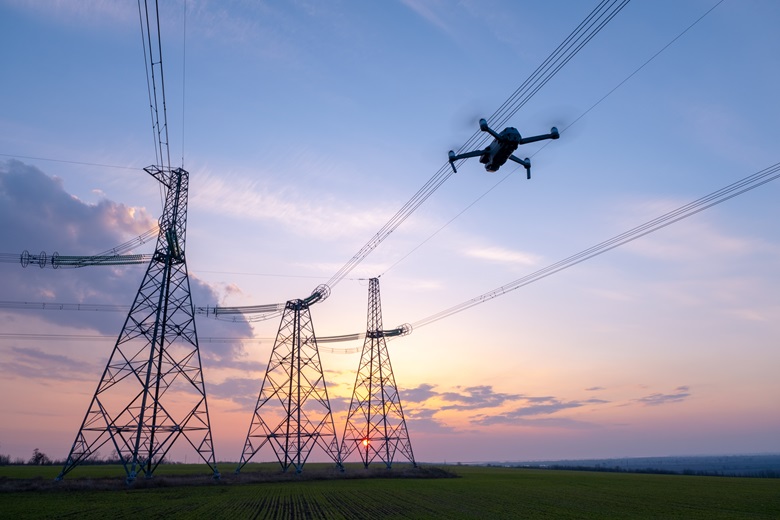The Future of Utility Inspections: AI and Autonomous Drones Transforming Grid Maintenance
As power utilities modernize their operations, many are adopting drone programs to enhance asset monitoring and inspections. This transition to drone use has demonstrated increased reporting accuracy, improved efficiency, and greater worker safety. At the same time, a significant evolution in technology is taking place—fully autonomous drones are now capable of perceiving, processing, and reacting in real-time without human intervention. This development reflects an evolution from mere ‘eyes in the sky’ to drones equipped with AI-powered intelligence.
The Next Generation of Drones
Today’s utilities are deploying drones with advanced equipment, including high-resolution cameras, LiDAR sensors, and thermal imaging technology to gain valuable insights into the condition of their assets. The data collected by drones is analyzed using AI to facilitate proactive maintenance, enhance forecasting, and ultimately minimize the frequency of site visits and power outages. While these capabilities have transformed the inspection process, there are limitations due to the need for trained pilots and significant initial investments in technology.
Utilities are now increasingly exploring the potential of fully autonomous systems to eliminate the need for human operators, enhancing drone self-sufficiency, intuitiveness, and real-time awareness. Although still in the early stages, advancements have progressed beyond initial testing, hinting at breakthroughs on the horizon.
Autonomous drones will incorporate AI navigation systems capable of detecting and avoiding obstacles dynamically, allowing operation in complex environments while recognizing hazards like trees or utility poles. Furthermore, these drones will feature AI-enabled defect detection systems capable of identifying structural issues, corrosion, or vegetation encroachment without exposing workers to hazardous conditions.
Leveraging Autonomy to Solve Common Challenges
It’s essential to acknowledge the substantial strides that utilities have made in upgrading their technologies and processes in recent years. Aging infrastructure, extreme weather events, and the rising demand for electricity have placed utilities under continuous pressure to maintain the power grid and minimize customer downtimes, often with constrained budgets.
Utilities vary in size, location, and available resources, but for those further along in their drone integration, it’s useful to compare their current capacities with what is possible in the future. Here are some common challenges hindering the scaling of drone programs:
1. Technical Limitations
Utilities are responsible for inspecting hundreds of miles of transmission and distribution lines, often spanning difficult terrains. Coverage per drone deployment can be limited by battery life and sensor weight. Autonomous drones could solve these issues with self-charging capabilities, where drones can land, recharge, and take off without needing human help. Additionally, new lightweight batteries and AI-enhanced route planning could lead to extended flight times, enabling continuous inspections.
2. Data Management and Analysis
Collecting data is only the first step; it also needs to be effectively processed and stored. The effectiveness of AI insights hinges on algorithms capable of accurately identifying and categorizing defects. Autonomous drones equipped with edge computing allow for real-time data processing and can automatically evaluate images to identify defects, lessening the workload for human analysts.
3. Security
Drones generally use cloud-based AI and remote communications, which might make them susceptible to cyber threats. Securely managing and protecting the data collected by drones is critical for utility risk management, as it must comply with various regulations. Autonomous drones can enhance cybersecurity with integrated AI solutions, such as Mobilicom’s ICE Cybersecurity Suite, designed to detect and respond to cyber threats autonomously, ensuring the secure transmission of data via networks like Starlink or private utility networks.
The Coming Age of Drone Autonomy
The future is bright for autonomous drones in utility inspections as leading companies like Skydio, Percepto, and Exyn Technologies are making substantial progress. A noteworthy example includes a recent collaboration between Skydio and Firmatek, where autonomous drones reduced pole inspection times from 30 minutes to merely 30 seconds—a stunning 92% time reduction that cut project timelines from three months to one week.
As more case studies surface, it’s important to understand that autonomy should be an inherent aspect of drone design rather than an additional feature. This evolution offers utilities the opportunity to modernize effectively and ensure resilience and longevity for their operations.













